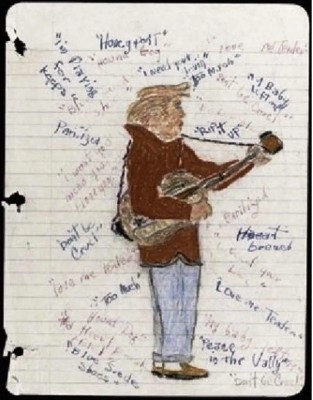Wilhelm Scream: Most Iconic Sound Effect - Origins and Iconic Examples
Explore the Wilhelm Scream's history and its impact on cinema. Learn how this iconic sound effect became a beloved Easter egg in over 400 films.
If you’ve ever watched a movie and thought, “Wait, I’ve heard that scream before,” you’re not alone. That infamous, high-pitched yell has echoed through the corridors of Hollywood for over fifty years, making its mark in everything from action-packed blockbusters to animated adventures. Known as the Wilhelm Scream, this sound effect has become a cinematic Easter egg, woven into the fabric of film history by some of the most influential filmmakers of our time. But where did this scream come from, and why has it become such a beloved part of cinema?
Table of Contents
The Origins of the Wilhelm Scream
The Wilhelm Scream first appeared in the 1951 film Distant Drums, during a scene where a soldier is attacked by an alligator. However, it wasn’t until two years later that the scream earned its name.
In the 1953 film The Charge at Feather River, the scream was used for a character named Private Wilhelm, who lets out the distinctive yell after being shot with an arrow. This moment cemented the scream’s place in cinema, but its journey to becoming an iconic sound effect was just beginning.
From Private Wilhelm to Start Wars
The Wilhelm Scream might have faded into obscurity if not for the keen ear of sound designer Ben Burtt. While working on the original Star Wars film in 1977, Burtt discovered the scream in the Warner Bros. archives and decided to incorporate it into the film. The scream was used as a stormtrooper falls to his death, marking the beginning of a long-standing tradition. Burtt went on to use the Wilhelm Scream in every subsequent Star Wars movie, and the sound effect began to pop up in countless other films
An Inside Joke Among Filmmakers
So, why do filmmakers continue to use the Wilhelm Scream? Part of the reason is practicality. Stock sound effects like the Wilhelm Scream are readily available and save time and money during production. But as the scream became more recognizable, it also turned into an inside joke among filmmakers. Directors like Steven Spielberg and Quentin Tarantino have used the scream in their films as a nod to classic cinema, creating a playful connection between movies across genres and decades.
For film buffs, hearing the Wilhelm Scream is like finding a hidden gem—a brief moment that adds an extra layer of enjoyment to the viewing experience. It’s a wink from the filmmaker, a reminder that movies are not just about telling stories, but also about participating in a rich tradition of cinematic history.
The Wilhelm Scream in Modern Cinema
Despite its widespread use, the Wilhelm Scream has not been without its critics. Some argue that the scream has become overused, turning from a clever nod to a distracting cliché. In fact, recent Star Wars films produced by Disney have retired the sound effect in favor of creating new, original sounds. Nevertheless, the scream continues to be used in other films, from Venom to Toy Story, proving that its legacy is far from over.
The Future of the Wilhelm Scream
Will the Wilhelm Scream continue to be a staple in cinema, or will it eventually fade away? While some filmmakers have moved on, the scream’s iconic status suggests that it will pop up in films for years to come. Whether as an homage to the past or a fun Easter egg for sharp-eared audiences, the Wilhelm Scream remains one of Hollywood’s longest-running inside jokes—a sound effect that’s as much a part of movie history as the films in which it appears.
So, the next time you’re watching a movie, listen closely. You might just hear that familiar scream and find yourself in on one of cinema’s most enduring traditions.
Get Free Gifts & Best Stories!
Join our newsletter to get our top stories of the month and free merch.
- 📚 Cool Stories: Read stories you won’t find in textbooks.
- 🎁 Free Gifts: Get exclusive stickers, t-shirts, and more!
Only 1 email a month. No spam, we promise!

